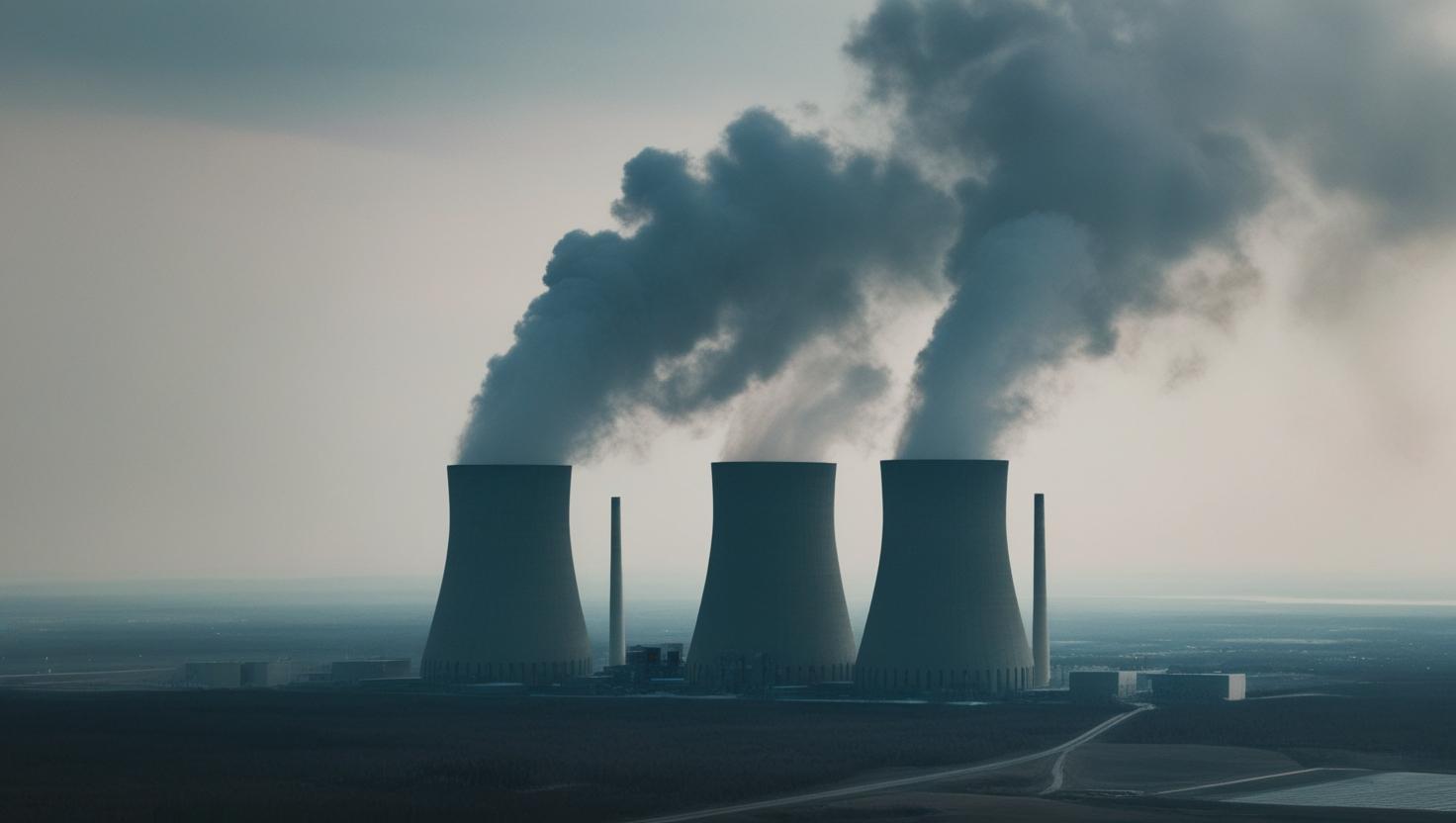Nuclear power has long been hailed as a clean and efficient energy source, yet the disasters at Chernobyl (1986) and Fukushima (2011) serve as powerful reminders of the immense risks involved. Though caused by different factors, both accidents resulted in devastating financial, political, social, and environmental consequences. As the world debates the future of nuclear — and the Coalition floats plans to make nuclear a significant power source for Australia — these historic crises stand as cautionary tales, worthy of greater reflection.
On Tuesday 25 February 2025, the Victorian Women’s Trust will host a free webinar Energy: Is Nuclear an Option for Australia? featuring environmentalists, Wendy Farmer (Community Organiser, Voices of the Valley & Friends of the Earth), and Alex Engel-Mallon (Advocacy Director, Climate Council), discussing the pros and cons of nuclear energy. The following contextualises the risks associated with nuclear power, and the ongoing fall out from Chernobyl and Fukushima.
The Chernobyl Disaster: A Catastrophic Explosion
On April 26, 1986, a routine safety test at the Chernobyl Nuclear Power Plant in Soviet Ukraine spiralled into catastrophe. A reactor exploded, releasing a massive cloud of radioactive material that spread across Europe. The accident was classified as a Level 7 event on the International Nuclear and Radiological Event Scale (INES), the highest possible rating (Steinhauser et al., 2014).
The Soviet Union’s initial response was marked by secrecy, which only exacerbated public distrust. It also accelerated calls for transparency and reform, playing a role in the eventual dissolution of the USSR (Carlson, 2019).
The accident ultimately cost Ukraine and Belarus an estimated over $100 billion in clean-up efforts, healthcare, and compensation. The New Safe Confinement (NSC), funded by international donors (EBRD, 2015), was built decades later to contain the radiation, costing €1.5 billion.
Beyond the financial toll, the Chernobyl accident accelerated political shifts, exposing flaws in the Soviet government’s transparency and contributing to calls for reform. In the years that followed, public sentiment towards nuclear energy soured, leading several countries to phase out or halt their nuclear programs.
Fukushima: A Natural Disaster Turns Nuclear Crisis
Fast forward to March 11, 2011 — Japan was struck by a 9.0-magnitude earthquake and subsequent tsunami, triggering a meltdown at the Fukushima Daiichi Nuclear Power Plant. Like Chernobyl, the Fukushima disaster was rated Level 7 on the INES scale. However, unlike Chernobyl, Fukushima was a failure of safety systems rather than operator error (Steinhauser et al., 2014).
The financial burden has been staggering. It’s estimated that Japan has spent over $200 billion on decommissioning, decontamination, and compensation (National Library of Medicine, 2014). As of January 2021, the Fukushima accident evacuees had received ¥9.7 trillion in personal and property compensation (World Nuclear Association (b), 2024). Tokyo Electric Power Company (TEPCO), the plant operator, has faced significant financial strain, requiring government bailouts of $12.5 billion (McCurry, 2012).
Politically, the fallout was immense. The Japanese government faced harsh criticism for its delayed response and lack of transparency. Trust in nuclear energy plummeted, leading to the shutdown of all 54 of Japan’s nuclear reactors by 2013. Only 14 have since restarted (Today in Energy, 2025).
The Ongoing Impact: Social and Environmental Costs
The human cost of both disasters extends far beyond immediate casualties. In Chernobyl, over 350,000 people were permanently displaced, many suffering long-term health effects, including increased thyroid cancer rates, as well as social stigma and psychological trauma (World Nuclear Association (a), 2024). The Fukushima accident saw 160,000 people evacuated, with psychological distress and social isolation emerging as major issues.
Environmental damage from both disasters remains severe. Chernobyl’s exclusion zone has, ironically, become a wildlife refuge, yet genetic mutations have been observed in some animals (UNEP, 2020). In Fukushima, radioactive contamination of the ocean has raised concerns about long-term impacts on marine life and the food chain (Zhou, 2024). Contaminated soil and forests continue to pose challenges, with some areas requiring decades to recover (Chalaux-Clergue et al., 2024).
Lessons for the Future
Despite advancements in nuclear technology, the risks remain. While modern reactors have stricter safety protocols, climate change presents new challenges, increasing the likelihood of extreme weather events that could compromise nuclear facilities.
Three key lessons emerge from Chernobyl and Fukushima:
- Transparency Matters: Governments and corporations must be honest in nuclear crisis management.
- Regulation is Critical: Strict international oversight is necessary to prevent future disasters.
- Public Trust Must Be Earned: Safety must always take priority over profit.
As countries weigh the role of nuclear power in a sustainable energy future, these disasters serve as stark warnings. The question remains: is the risk worth it?
Nuclear power offers promise, but at what cost? Learn more at Trust Women: Lunch Break Sessions – Gender Equality Policy Webinar Series. Coming up:
Energy: Is Nuclear an Option for Australia?
📅 12pm AEDT, Tuesday 25 February 2025
👩💻 Free Zoom Webinar
Wendy Farmer, Community Organiser, Voices of the Valley & Friends of the Earth
Alex Engel-Mallon, Advocacy Director, Climate Council
Mary Crooks AO (moderator) Executive Director, Victorian Women’s Trust
References
Andrews-Speed, Philip. (2019) Governing nuclear safety in Japan after the Fukushima nuclear accident: incremental or radical change?, Journal of Energy & Natural Resources Law, 38(2), available online at https://www.tandfonline.com/doi/full/10.1080/02646811.2020.1741990.
Carlson, John. (2019) Chernobyl: the continuing political consequences of a nuclear accident, The Interpreter, available online at https://www.lowyinstitute.org/the-interpreter/chernobyl-continuing-political-consequences-nuclear-accident#:~:text=In%20various%20ways%20the%20accident,General%20Secretary%20Mikhail%20Gorbachev’s%20thinking.
Chalaux-Clergue, Thomas. Et al. (2024), Impacts of farmland decontamination on 137Cs transfers in rivers after Fukushima nuclear accident: Evidence from a retrospective sediment core study, Science of the Total Environment, 947, available online at https://www.sciencedirect.com/science/article/pii/S0048969724046941#:~:text=Following%20the%20Fukushima%20Daiichi%20Nuclear,soils%20and%20allow%20population%20return.
Congressional Research Service (CRS), Fukushima Nuclear Disaster, 2012, available online at https://crsreports.congress.gov/product/pdf/R/R41694.
European Bank for Reconstruction and Development (EBRD), Chernobyl’s New Safe confinement, 2025, available online at https://www.ebrd.com/what-we-do/sectors/nuclear-safety/chernobyl-new-safe-confinement.html.
International Atomic Energy Agency (IAEA), Frequently Asked Chernobyl Questions, 2005, available online at https://www.iaea.org/newscenter/focus/chernobyl/faqs.
International Atomic Energy Agency (IAEA). (2015). The Fukushima Daiichi Accident.
McCurry, Justin. (2012), Fukushima owner saved from collapse by Japanese government, The Guardian, available online at https://www.theguardian.com/environment/2012/may/09/fukushima-owner-saved-japanese-government.
National Library of Medicine, Lessons Learned from the Fukushima Nuclear Accident for Improving Safety of U.S. Nuclear Plants, 2014, available online at https://www.ncbi.nlm.nih.gov/books/NBK253929/.
Nuclear Energy Agency (NEA), Chernobyl: Chapter VI. Agricultural and environmental impacts, 2025, available online at https://www.oecd-nea.org/jcms/pl_28351/chernobyl-chapter-vi-agricultural-and-environmental-impacts#:~:text=The%20uptake%20of%20plutonium%20from,are%20not%20washed%20and%20peeled.
Samet, Jonathan M., and Seo, Joann., The Financial Costs of the Chernobyl Nuclear Power Plant Disaster, 2016, available online at https://globalhealth.usc.edu/wp-content/uploads/2016/01/2016_chernobyl_costs_report.pdf.
Société Française de Radioprotection (SFRP), Impact of the Chernobyl accident on agriculture – Countermeasures on agricultural areas, 2016, available online at https://sfrp.asso.fr/wp-content/uploads/2021/11/S2b_-_DURAND_V.pdf.
Steinhauser, Georg., Brandl, Alexander., and E.Johnson, Thomas. (2014) Comparison of the Chernobyl and Fukushima nuclear accidents: A review of the environmental impacts, Science of the Total Environment, 470-471(800-817), available online at https://www.sciencedirect.com/science/article/abs/pii/S004896971301173X.
Today in Energy, Since the 2011 Fukushima accident, Japan has restarted 14 nuclear reactors, 2025, available online at https://www.eia.gov/todayinenergy/detail.php?id=64204#:~:text=Japan%20suspended%20its%20nuclear%20fleet,of%20the%20country’s%20electricity%20generation.
Tokyo Electric Power Company Holdings (TEPCO), What is the Decommissioning Project?, 2025, available online at https://www.tepco.co.jp/en/hd/decommission/index-e.html.
UN Environment Programme (UNEP), How Chernobyl has become an unexpected haven for wildlife, 2020, available online at https://www.unep.org/news-and-stories/story/how-chernobyl-has-become-unexpected-haven-wildlife.
World Nuclear Association (a), Chernobyl Accident 1986, 2024, available online at https://world-nuclear.org/information-library/safety-and-security/safety-of-plants/chernobyl-accident.
World Nuclear Association (b), Fukushima Daiichi Accident, 2024, available online at https://world-nuclear.org/information-library/safety-and-security/safety-of-plants/fukushima-daiichi-accident.
Zheng, Shanshan., and Wang, Derek D. (2024), The local economic impacts of mega nuclear accident: A synthetic control analysis of Fukushima, Economic Modelling, 136, available online at https://www.sciencedirect.com/science/article/pii/S026499932400107X.
Zhou, Xiaoqi. (2024) Uncharted effects of Fukushima Nuclear Plant Wastewater Discharge on marine life, Journal of Plant Ecology, 17(3), available online at https://academic.oup.com/jpe/article/17/3/rtae006/7588758#.




